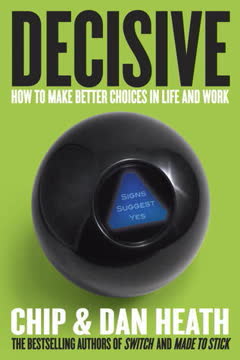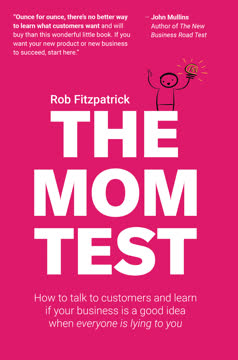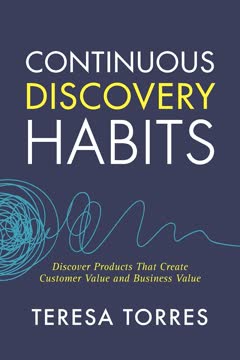つの重要なポイント
1. Jobs-to-be-Done理論:顧客ニーズを理解するための革命的アプローチ
Jobs-to-be-Done理論は、(i)顧客のニーズを分類、定義、捕捉、整理するための枠組みを提供し、(ii)顧客が定義したパフォーマンス指標(望ましい成果の形で)をJob-to-be-Doneに結びつける。
イノベーションのパラダイムシフト。 Jobs-to-be-Done理論は、企業がイノベーションに取り組む方法を革命的に変え、製品や人口統計ではなく、顧客が達成しようとしている基本的な仕事に焦点を当てる。この視点により、企業は以下を実現できる:
- すべての顧客ニーズを体系的に特定
- 顧客が成功を測るための指標を理解
- 未満のニーズに効果的に対処するソリューションを開発
安定性と普遍性。 この理論は、仕事が時間や地理を超えて安定していると仮定し、長期的なイノベーション戦略の信頼できる基盤を提供する。この安定性は、製品や技術の絶え間ない変化と対照的であり、企業が以下を実現できる:
- 永続的な価値提案を作成
- 世界的に関連するソリューションを開発
- 製品サイクル全体で一貫してイノベーション
2. Jobs-to-be-Doneニーズフレームワーク:顧客ニーズの分類と定義
仕事は顧客が実行しようとしている全体的なタスクを説明し、成果は顧客が仕事を実行する際に成功と価値を測るための指標である。
包括的なニーズ分析。 Jobs-to-be-Doneニーズフレームワークは、顧客ニーズを理解し分類するための構造化されたアプローチを提供し、以下を含む:
- コア機能的Job-to-be-Done
- コア機能的仕事に結びついた望ましい成果
- 関連する仕事
- 感情的および社会的な仕事
- 消費チェーンの仕事
- 購入者の財務的な望ましい成果
実行可能な洞察。 これらの異なるカテゴリに顧客ニーズを分解することで、企業は以下を実現できる:
- よりターゲットを絞った効果的なソリューションを開発
- 顧客ニーズの機能的および感情的な側面に対処
- 購入から廃棄までの全体的な顧客体験を向上
3. Outcome-Driven Innovation (ODI):Jobs理論を実践に移す
Outcome-Driven Innovationは、企業が顧客が仕事をより良く、またはより安く達成するのを助ける新しいソリューションを概念化し発明するための戦略およびイノベーションプロセスである。
体系的なイノベーションプロセス。 ODIはJobs理論を実践的なステップバイステップの方法論に変え、以下を含む:
- 顧客の定義
- Job-to-be-Doneの定義
- 顧客ニーズの発見
- 機会セグメントの発見
- 価値提案の定義
- 競争分析の実施
- イノベーション戦略の策定
- 隠れた成長機会のターゲティング
- 市場戦略の策定
- 製品戦略の策定
データ駆動の意思決定。 このプロセスに従うことで、企業は以下を実現できる:
- イノベーションにおける推測を減少
- 製品開発を顧客ニーズに合わせる
- 市場成功の確率を高める
4. 顧客の望ましい成果を明らかにする:成功するイノベーションの鍵
望ましい成果のステートメントは、顧客がコア機能的な仕事の各ステップを通じて成功と価値を測る方法を正確に説明する。
正確なニーズ定義。 望ましい成果のステートメントは、顧客ニーズを測定可能で実行可能な形式で捉えるために慎重に構築される。これらのステートメントは:
- 特定の構造に従う:改善の方向 + パフォーマンス指標 + 制御対象 + 文脈の明確化
- 特定の製品機能ではなく、基礎的なニーズに焦点を当てる
- イノベーション努力の明確なターゲットを提供
包括的な仕事分析。 仕事のプロセス全体をマッピングし、各ステップの望ましい成果を捉えることで、企業は以下を実現できる:
- 以前見過ごされていたイノベーションの機会を特定
- 仕事全体に対処するソリューションを開発
- より包括的で効果的な製品やサービスを作成
5. Outcome-Based Segmentation:隠れた市場機会の発見
未満のニーズを持つ顧客セグメントを発見する唯一の方法は、市場を未満のニーズに基づいてセグメント化することである。
従来のセグメンテーションを超えて。 Outcome-Based Segmentationは、人口統計や心理統計の分類を超えて、未満のニーズに基づいてグループを特定する。このアプローチは:
- 独自の機会を持つ隠れたセグメントを明らかにする
- 市場のダイナミクスのより正確な絵を提供
- よりターゲットを絞った効果的なイノベーション戦略を可能にする
データ駆動の市場分析。 このプロセスには以下が含まれる:
- すべての顧客ニーズを望ましい成果のステートメントとして捕捉
- ニーズを優先順位付けするための定量的研究の実施
- 類似の未満のニーズを持つセグメントを特定するための因子分析とクラスター分析の使用
- 未満のニーズの原因となる基礎的な要因を理解するためのセグメントのプロファイリング
6. Jobs-to-be-Done成長戦略マトリックス:適切なイノベーション戦略の選択
新しい製品やサービスは、顧客が仕事をより良く(速く、より予測可能に、高い出力で)またはより安く達成するのを助ける場合、市場で勝利する。
戦略的イノベーションフレームワーク。 成長戦略マトリックスは、市場条件に基づいて最も適切なイノベーション戦略を選択するためのガイドを提供する:
- 差別化戦略:より良いが高価
- 支配戦略:より良くて安価
- 破壊戦略:悪いが安価
- 離散戦略:悪くて高価(ニッチな状況)
- 維持戦略:やや良いまたは安価
情報に基づいた戦略選択。 市場の未満および過剰サービスセグメントを理解することで、企業は以下を実現できる:
- 最も効果的な成長戦略を選択
- 製品開発を市場機会に合わせる
- 成功するイノベーションの可能性を高める
7. ODIの実装:予測可能なイノベーション成功のための組織変革
Outcome-Driven組織を構築する最良の方法は、3つのフェーズで行う:I. 顧客のJob-to-be-Doneを理解する、II. 市場の隠れた機会を発見する、III. 新しい顧客洞察を成長に活用する
組織変革。 ODIの実装には以下が含まれる:
- 内部ODI実践者のチームを作成
- イノベーションセンターオブエクセレンスの設立
- Jobs理論とODIの実践を選択された市場に適用
段階的な実装アプローチ。 3つのフェーズのプロセスにより、企業は以下を実現できる:
- 顧客の仕事とニーズを深く理解
- 定量的研究を通じて隠れた市場機会を発見
- 改善された市場および製品戦略を通じて成長を促進
このアプローチに従うことで、組織はイノベーションプロセスを体系的に変革し、より予測可能で成功する結果をもたらすことができる。
最終更新日:
FAQ
What's "Jobs to be Done: Theory to Practice" about?
- Focus on Innovation: The book by Anthony W. Ulwick focuses on transforming innovation from a chance-based endeavor to a predictable process using the Jobs-to-be-Done theory.
- Outcome-Driven Innovation: It introduces Outcome-Driven Innovation (ODI), a process that links customer needs to product development, ensuring that new products meet real market demands.
- Framework for Success: The book provides a framework for understanding customer needs and creating products that fulfill those needs better and/or more cheaply than competitors.
- Practical Application: It offers practical steps and case studies to help companies implement the Jobs-to-be-Done theory in their innovation processes.
Why should I read "Jobs to be Done: Theory to Practice"?
- Improve Innovation Success: The book claims an 86% success rate for innovation projects using its methods, compared to the industry average of 17%.
- Structured Approach: It provides a structured approach to understanding customer needs, which can lead to more successful product development.
- Real-World Examples: The book includes case studies from companies like Microsoft and Bosch, demonstrating the practical application of its theories.
- Comprehensive Guide: It serves as a comprehensive guide for companies looking to improve their innovation processes and achieve growth.
What are the key takeaways of "Jobs to be Done: Theory to Practice"?
- Customer-Centric Innovation: Focus on what jobs customers are trying to get done, rather than on the products themselves.
- Outcome-Driven Process: Use customer-defined metrics to guide product development and innovation strategies.
- Segmentation and Strategy: Discover underserved market segments and tailor strategies to meet their specific needs.
- Predictable Success: By understanding and addressing customer needs, companies can predictably create successful products.
What is the Jobs-to-be-Done theory?
- Core Concept: The theory posits that customers "hire" products to get specific jobs done, focusing on the desired outcomes rather than the product itself.
- Stable Over Time: Jobs are stable over time, unlike products or technologies, which change and evolve.
- Universal Application: The theory applies across different geographies and industries, as people everywhere have similar jobs they need to get done.
- Foundation for Innovation: It serves as a foundation for developing products that truly meet customer needs.
How does Outcome-Driven Innovation (ODI) work?
- Customer Metrics: ODI begins with identifying the metrics customers use to measure success in getting a job done.
- Quantitative Research: It employs unique quantitative research methods to analyze markets and uncover hidden opportunities.
- Segmentation and Strategy: The process includes segmenting markets based on unmet needs and formulating strategies to address them.
- High Success Rate: ODI claims a high success rate by aligning product development with customer-defined metrics.
What are the types of customer needs in the Jobs-to-be-Done Needs Framework?
- Core Functional Job: The primary task or goal the customer is trying to accomplish.
- Desired Outcomes: Metrics customers use to measure success in executing the core functional job.
- Related Jobs: Other functional jobs that are important to the customer while executing the core job.
- Emotional and Social Jobs: How customers want to feel or be perceived while getting the job done.
What is the Jobs-to-be-Done Growth Strategy Matrix?
- Five Strategies: The matrix outlines five growth strategies: Differentiated, Dominant, Disruptive, Discrete, and Sustaining.
- Market Positioning: It helps companies understand how to position their products based on whether they get a job done better and/or more cheaply.
- Targeting Segments: The matrix guides companies in targeting underserved or overserved market segments.
- Strategic Decision-Making: It provides a framework for making strategic decisions about product development and market entry.
What are some case studies mentioned in "Jobs to be Done: Theory to Practice"?
- Microsoft: Improved its Software Assurance offering by aligning it with customer needs, leading to increased revenue and customer satisfaction.
- Bosch: Successfully entered the North American circular saw market by addressing 14 underserved outcomes, resulting in a top-selling product.
- Kroll Ontrack: Used ODI to dominate the electronic document discovery market by focusing on customer jobs and outcomes.
- Arm & Hammer: Achieved over 30% revenue growth by realigning its market strategy around customer outcomes.
How can companies become ODI practitioners?
- Training and Tools: Companies can train internal teams to become ODI practitioners, using tools and templates provided by Strategyn.
- Project Execution: Practitioners are responsible for executing ODI projects, from defining customer needs to formulating market strategies.
- Skill Requirements: Practitioners need skills in qualitative and quantitative research, data analysis, and strategic planning.
- Organizational Transformation: By adopting ODI, companies can transform their innovation processes and achieve predictable success.
What is the role of quantitative research in ODI?
- Data Collection: Quantitative research gathers statistically valid data to inform market and product strategies.
- Segmentation Analysis: It helps discover outcome-based segments with unique unmet needs.
- Competitive Analysis: Quantitative data is used to evaluate how well competing products satisfy customer needs.
- Opportunity Identification: The research identifies which customer needs are underserved, guiding innovation efforts.
What are the best quotes from "Jobs to be Done: Theory to Practice" and what do they mean?
- "Innovation cannot be left to chance." This emphasizes the need for a structured, predictable approach to innovation.
- "People buy products and services to get a job done." Highlights the core principle of Jobs-to-be-Done theory, focusing on customer needs rather than products.
- "Outcome-Driven Innovation replaces luck with a predictable process." Stresses the reliability and effectiveness of the ODI process in achieving innovation success.
- "Knowing all the customer’s needs changes everything." Underlines the importance of understanding customer needs for successful product development.
How does "Jobs to be Done: Theory to Practice" redefine the language of innovation?
- Common Language: The book introduces a common language for innovation, centered around customer jobs and outcomes.
- Customer-Centric Terms: It redefines traditional innovation terms from a customer-centric perspective.
- Framework and Definitions: Provides clear definitions and frameworks for understanding and discussing innovation.
- Organizational Alignment: A common language helps align teams and departments around a shared understanding of customer needs and innovation goals.
レビュー
『Jobs to be Done』は賛否両論の評価を受けている。顧客のニーズに焦点を当てた実践的なイノベーションアプローチを称賛する声もあるが、一方で自己宣伝が過剰で、繰り返しが多く、具体的な実行ツールに欠けていると批判する意見も多い。読者は核心となる概念を評価するものの、その実行方法には不満を感じている。いくつかのレビューでは、本書が著者のコンサルティングサービスの広告のように感じられると指摘されている。フレームワークに価値を見出す人もいるが、既存の製品開発の知恵を単に再パッケージしただけだと主張する人もいる。
Similar Books














